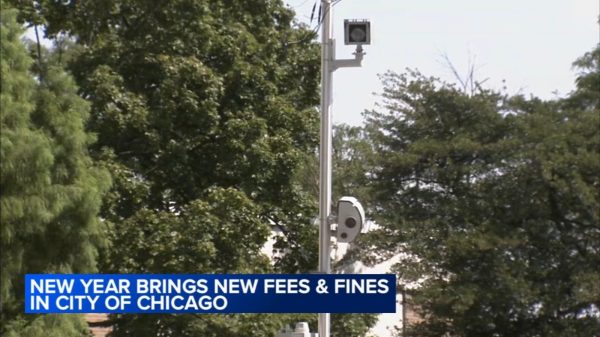
The Honda CR-V has been a top choice in its compact SUV class since its debut in the U.S. market back in 1997. It combines reliability, versatility, and efficiency, making it a go-to option for families, commuters, and adventurers. If you’re considering a used CR-V, you may wonder: how far can one of these vehicles really go? The good news is that with proper care, the Honda CR-V has a reputation for lasting well over 200,000 miles, and some even push beyond 300,000 miles.
This impressive longevity is thanks to Honda’s meticulous engineering and focus on quality. The CR-V’s powertrains, including its engines and transmissions, are designed to be robust, and the vehicle’s overall construction holds up well over time.
What is considered high mileage on a Honda CR-V?
Mileage is an important factor when shopping for a used car. For a Honda CR-V, “high mileage” might not mean the same as it does for other vehicles. Most cars are considered high mileage after hitting 100,000 miles. However, many Honda CR-Vs with 100,000 to 150,000 miles are still in excellent working condition and have a lot of life left.
A well-maintained CR-V with a full service history can continue running strong past the 200,000-mile mark. But mileage isn’t the only number to consider. Pay attention to how the vehicle was driven and maintained. City driving, for instance, can put more wear and tear on the car than highway miles. Additionally, check for evidence of regular oil changes, brake servicing, and other routine maintenance.
Which Honda CR-V models should you sidestep?
While the CR-V is consistently one of the most reliable SUVs, not every model year is equal. Some years have reported more issues than others. Here are the ones that have garnered more complaints:
2011 Honda CR-V: Owners reported air conditioning issues and door lock malfunctions. Some also experienced problems with the vehicle’s suspension.
2014-2015 Models: These years are known for vibration issues at idle and some reports of excessive oil consumption. Electrical problems, such as malfunctioning infotainment systems, have also been noted.
2017 Honda CR-V: The first model year of the fifth generation faced teething issues. Owners reported problems with the turbocharged 1.5-liter engine, including oil dilution, where fuel mixes with oil and reduces its effectiveness.
If you’re considering one of these years, be cautious. Investigate whether the previous owner addressed known issues, and ask for a detailed service history. A professional mechanic’s inspection is a good idea, too.
Common issues Honda CR-Vs face
Even the most reliable cars aren’t immune to occasional problems. Below are some common issues Honda CR-V owners have reported, along with when you might expect them:
Air Conditioning Failures: Second and third-generation CR-Vs (2002–2011) are particularly prone to air conditioning system failures, often due to faulty compressors. Repairs can be expensive, but many owners feel the vehicle’s other strengths outweigh this flaw.
Excessive Oil Consumption: Fourth-generation CR-Vs (2012–2016) sometimes experience excessive oil consumption, particularly in the 2010 and 2011 models. This is typically due to problems with piston rings.
Vibration at Idle: Fifth-generation CR-Vs (2017–present) equipped with the turbocharged engine sometimes experience vibrations when idling. The issue has been linked to the drivetrain and engine mounts.
Electrical Glitches: Newer CR-Vs, especially from 2017 onward, have been reported to experience issues with infotainment systems, rearview cameras, and other electronics.
How to maintain a Honda CR-V for maximum longevity
If you want to keep your CR-V on the road for as long as possible, follow these key tips:
Stick to the Maintenance Schedule: Honda provides a maintenance schedule tailored to your specific CR-V. Follow it closely to ensure components like timing belts, fluids, and filters are replaced on time.
Keep Fluids Fresh: Regularly check and replace vital fluids like engine oil, transmission fluid, brake fluid, and coolant. Clean fluids ensure the vehicle’s components run smoothly.
Inspect the Brakes: Brake systems wear out over time, especially if you drive in stop-and-go traffic. Inspect them regularly to ensure they function properly.
Use Quality Parts: When it’s time for repairs, opt for genuine Honda parts or high-quality aftermarket alternatives. Cheap parts can compromise reliability and performance.
Drive Smoothly: Aggressive driving can shorten the lifespan of your CR-V’s components. Accelerate gradually, avoid hard braking, and stick to the speed limit.
How does the Honda CR-V compare to class competitors?
The CR-V often competes with other compact SUVs like the Toyota RAV4, Subaru Forester, and Mazda CX-5. While these vehicles also boast strong reputations for reliability, the CR-V’s edge often lies in its:
Spacious Interior: The CR-V has class-leading cargo space, making it ideal for families and road trips.
Efficient Engines: Honda’s engines balance performance and fuel economy, with some newer models achieving over 30 mpg combined.
Resale Value: Thanks to its reputation for reliability, the CR-V holds its value well, making it a smart long-term investment.
How to choose the right used CR-V
When shopping for a used Honda CR-V, keep these tips in mind:
Inspect the Maintenance History: Look for a vehicle with records of regular oil changes, brake servicing, and timing belt replacements.
Check for Recalls: Honda has issued recalls for specific CR-V model years. Ensure the vehicle you’re considering has had all recall-related repairs completed.
Take a Test Drive: Pay attention to how the vehicle drives. Listen for unusual noises and test features like the air conditioning, brakes, and infotainment system.
Get a Pre-Purchase Inspection: Have a trusted mechanic inspect the car before you commit. They can identify potential issues you may have missed.
The Honda CR-V is one of the most reliable SUVs you can buy, new or used. With proper care, many CR-Vs surpass 200,000 miles, providing dependable service for years. While some model years have reported specific issues, the overall track record of the CR-V is stellar. By doing your research, adhering to maintenance schedules, and addressing problems promptly, you can confidently drive your Honda CR-V for the long haul.

















































